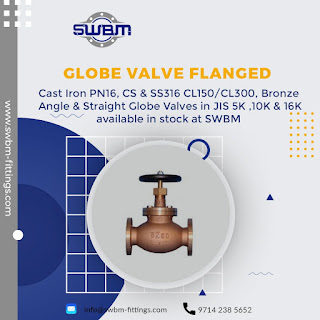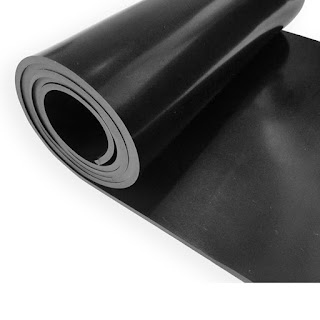Flanged Globe Valve
When thinking of materials and general industrial piping system, pipes and fitting are the greatest concerns. It has been seen that valve selection is quite an afterthought, once all the primary decisions are taken. Though this is an essential decision as to which one to choose according to the requirement of the piping system. There are ball valves, gate valves, globe valves, butterfly or wafer valves, check valves, diaphragm valves and more are there to choose from. The engineer has to determine which one is needed in which place.
Valves are
supposed to get a lot of attention when deciding on the material. The valves are
important for any successful system. Hence, it plays an extensive role in
increasing productivity, improving security and keeping systems up and running.
All the valves
have their specific purpose and function. One of the most common valves is the
flanged globe valve.
What are flanged globe valves?
It is a linear motion valve and is chiefly proposed to stop, start and control flow. The disc of these valves can be completely detached from the flow path or it can entirely close the flow path. Flanged globe valves make a globular-shaped hole around the port region and thus the name. The disc can be of different shapes and moves opposite to the globe valve seat. This movement of the disc helps in the opening and closing of the valve. Globe valves are generally used for lines of size 8 inches or less.
Uses of flanged
globe valve
Conventional use
of globe valves could be isolation and throttling services. Even though these
valves show somewhat higher pressure drops than those straight valves (gate,
plug, ball, etc.), they could be used where the pressure drop through the valve
is not a regulatory factor.
How are globe
valves made?
Globe valves generally
have rising stems, and the larger sizes are of the screw-and-yoke present on
the outside. Globe valve and gate valves have quite the same.
Globe valves are
relatively easy to maintain, as the discs and seats are promptly revamped or changed.
This makes Flanged globe
valves mainly suitable for services the maintenance of the valve is
required regularly. Wherever valves function manually, the shorter disc travel
offers benefits in saving operator time, particularly if the valves are
adjusted often.
The most common
applications of flanged globe valves
The following
are some of the distinctive applications of globe valves:
- Chilling water systems – flow needs to be
controlled
- Fuel oil system – flow is controlled and
leak tension holds importance
- High-point vents and low-point drains –
leak tightness and protection are chief concerns
- Feedwater, chemical feed, condenser air
extraction, and extraction drain systems
- Boiler vents and drains, main steam vents
and drains, and heater drains
- Turbine seals and drains
Advantages and
disadvantages of flange globe valve
Advantages
The structure
of the flange globe valve
is simple; thus, the manufacture and repair are more convenient. It has short
opening, and closing times. Also, it has a long life, and has good sealing,
with low friction between sealing surfaces.
Since the fluid
resistance is great, so greater force is required for opening and closing. This
kind of valve is not suitable for medium with particles or extensive stickiness
and is easy to throttling. Also, its adjustment performance is not very good.
Even though
there are advantages and disadvantages of flange globe valve, but if you
weigh both, you will find more benefits of it. SWBM are the
manufacturers and suppliers of all sorts of valves that are used for
engineering purposes. Cast iron PN16, CS and SS316 CL150/CL 300, bronze angle
and straight globe valves in JLS 5K, 10K and 16K are available in stock at SWBM
– the name you can trust when it comes to building and engineering materials.




Comments
Post a Comment